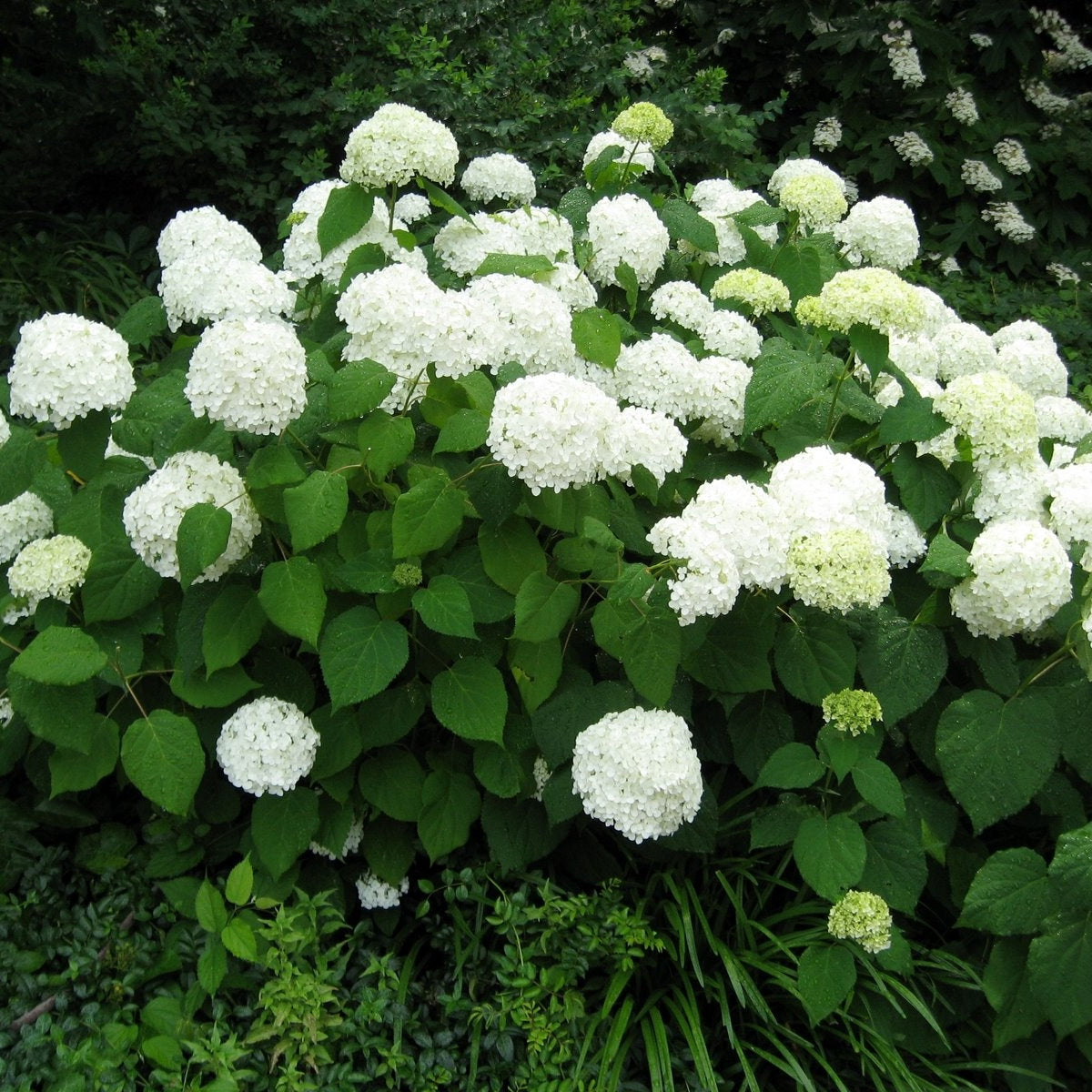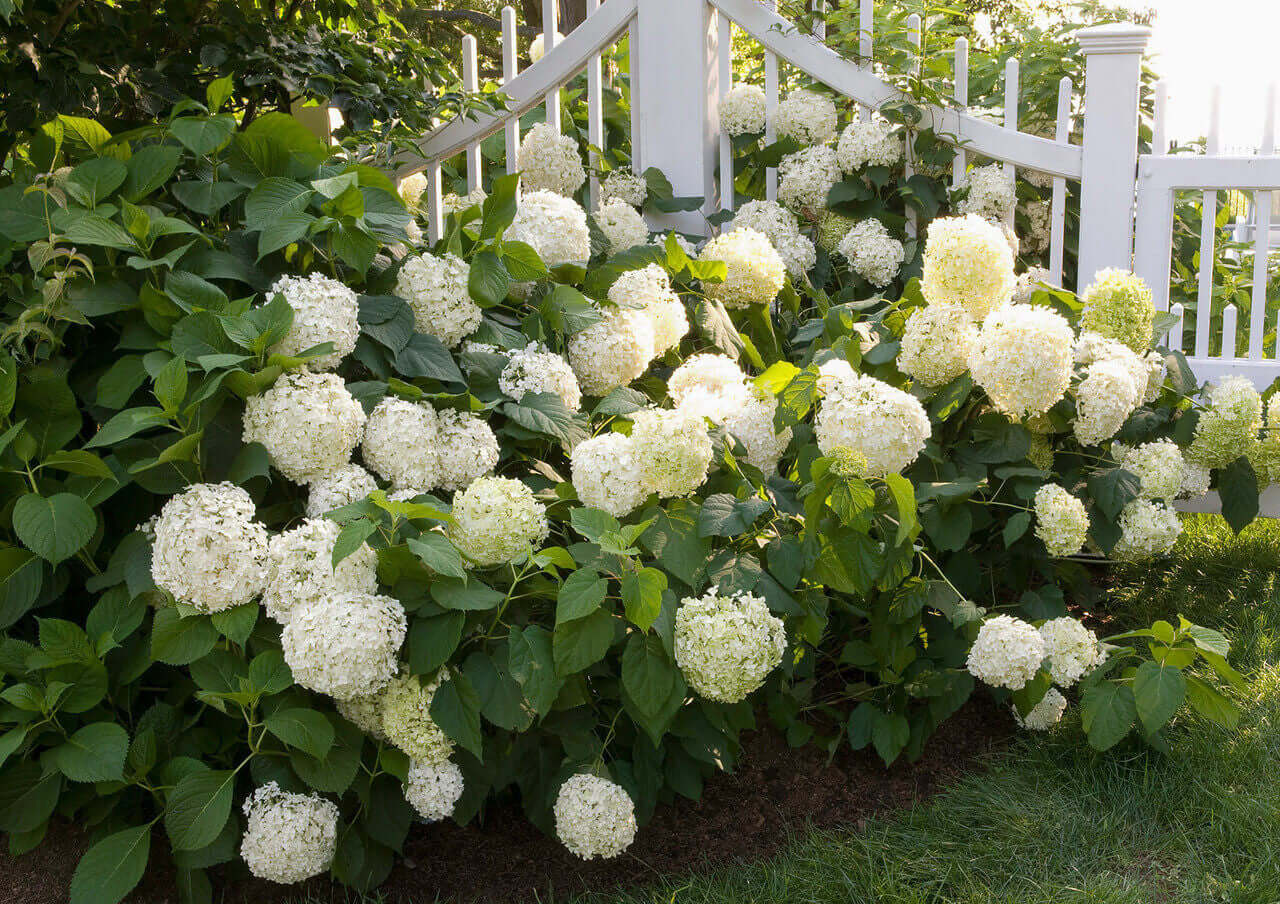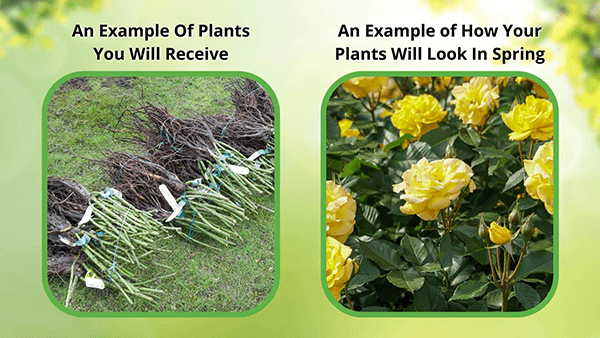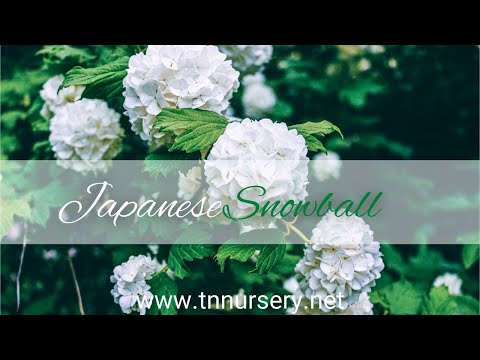Smooth Hydrangea for Sale – Native, Hardy, and Beautifully Blooming
Smooth Hydrangea (Hydrangea arborescens) is a beloved native flowering shrub in North America, renowned for its dependable growth and classic, globe-shaped white blooms. At TN Nursery, we have over 65 years of experience growing hardy, native shrubs that thrive in various climates.
Since 1959, we have been a trusted grower and have supplied plants to major U.S. landmarks like the Washington Monument and Arlington National Cemetery. We bring proven horticultural experience, expertise, and trust to every Smooth Hydrangea we ship.
Why Smooth Hydrangea Is a Top Choice for Gardeners
Hydrangea is valued for its adaptability and can thrive in areas where other hydrangeas may struggle to grow. Unlike bigleaf types that need specific soil pH, Smooth Hydrangea blooms every year, no matter the pH.
Its large white flowers brighten shady spots, woodland edges, foundation plantings, and cottage gardens. As a native plant, it helps pollinators, uses natural rainfall, and supports local ecosystems while adding beauty all season.
TN Nursery's Smooth Hydrangeas: Grown with Quality and Care
TN Nursery sends you freshly dug bare-root Smooth Hydrangeas that settle in quickly after planting. Bare-root shrubs grow stronger roots, have less transplant shock, and adjust better to your soil than container-grown plants.
Our experienced team carefully selects and grows each plant for its strength, cold hardiness, and exceptional blooms. With decades of experience, we ensure that you receive hydrangeas that look beautiful in gardens across the country.
Top Benefits of Smooth Hydrange
- Reliable Blooms: Produces abundant flowers every year, even after harsh winters.
- Native & Hardy: Thrives in USDA zones 3–9 with excellent cold and heat tolerance.
- Beautiful Cut Flowers: Long-lasting blooms perfect for arrangements and drying.
- Shade Tolerant: Ideal for partially shaded or woodland landscapes.
- Low Maintenance: Easy to grow, prune, and maintain for gardeners of all levels.
Ideal Growing Conditions for Smooth Hydrangea
This hydrangea does best in partial shade but can handle full sun if the climate is cool. It likes moist, well-drained soil with plenty of organic matter. Once it is established, Smooth Hydrangea is tough and can handle dry spells better than many other flowering shrubs. Adding mulch around the roots helps retain moisture and keep the soil cool during hot weather.
How to Plant Smooth Hydrangea
- Plant during dormancy—fall through early spring—for the strongest root establishment.
- Dig a wide hole and loosen the surrounding soil to encourage root spread.
- Set the bare-root shrub at the same level it grew in the nursery.
- Water deeply after planting and apply mulch around the base.
- Prune in late winter or early spring to promote larger blooms.
Ecological Benefits of Smooth Hydrangea
As a native shrub, Smooth Hydrangea plays an essential role in supporting local pollinators, helping to sustain bees and other beneficial insects. Its flowers provide nectar throughout the summer, and its thick growth offers wildlife a place to nest.
Planting native plants, such as this plant, helps restore biodiversity, strengthens ecosystems, and fosters healthier gardens. TN Nursery is proud to offer native shrubs that support sustainable landscaping and help restore nature.
TN Nursery has grown premium-quality native shrubs, such as the Smooth Hydrangea, with a commitment to excellence, fast shipping, and grower-direct pricing. Our horticultural expertise ensures every Smooth Hydrangea meets the highest standards for health and performance. When you choose TN Nursery, you’re planting with confidence backed by real experience and strong authority—qualities that help your landscape thrive for years to come.
Most Asked Hydrangea Questions
Is Smooth Hydrangea easy to grow?
Yes. This native species is one of the easiest hydrangeas to grow, even for beginners.
Does Smooth Hydrangea bloom every year?
Absolutely. It blooms each season reliably, regardless of winter weather or soil pH.
How much sun does Smooth Hydrangea need?
It thrives in partial shade but can tolerate full sun in cooler regions.
When should I prune Smooth Hydrangea?
Late winter or early spring pruning encourages vigorous new growth and larger blooms.
Exposure
Snow Hill Hydrangea thrives in partial shade to full sun. It prefers the morning sun with afternoon shade to protect it from the harsh midday heat. Ensure it gets about 4-6 hours of light daily for optimal growth and blooming.
Height at Maturity
Under 10 Feet
Usage
Flowering
Shipped As
Bare-root
Ships
UPS
Planting Zones
3-9




